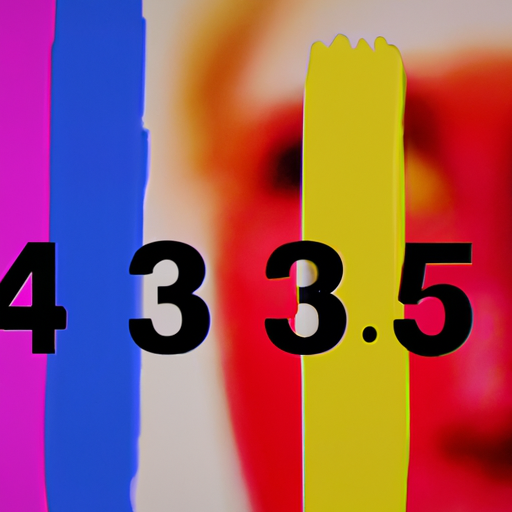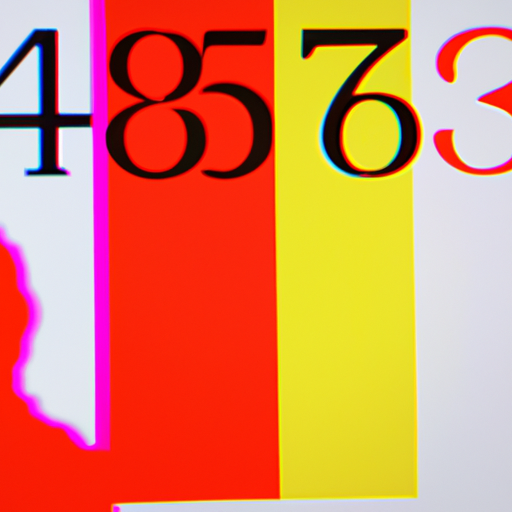
-
Table of Contents
- Art and Data Visualization: Making Numbers Beautiful
- The Power of Visuals
- The Intersection of Art and Data Visualization
- The Role of Design in Data Visualization
- Case Studies: Beautiful Data Visualizations
- 1. “The Joy of Stats” by Hans Rosling
- 2. “Wind Map” by Fernanda Viégas and Martin Wattenberg
- 3. “The Fallen of World War II” by Neil Halloran
- The Future of Art and Data Visualization
- Summary
Art and Data Visualization: Making Numbers Beautiful

Data visualization is the art of presenting complex information in a visual format that is easy to understand and interpret. It is a powerful tool that allows us to make sense of large amounts of data and uncover patterns, trends, and insights. While data visualization is primarily used for analytical purposes, it can also be a form of art, transforming numbers and statistics into visually stunning and engaging works.
The Power of Visuals
Humans are visual creatures. We process visual information much faster than text, and visuals have a greater impact on our memory and understanding. This is why data visualization is so effective in conveying information. By presenting data in a visual format, we can quickly grasp the key points and gain a deeper understanding of the underlying patterns and relationships.
Artists have long recognized the power of visuals to communicate complex ideas and emotions. From cave paintings to Renaissance masterpieces, art has been used to tell stories, convey messages, and evoke emotions. In the digital age, data visualization has emerged as a new form of artistic expression, combining the analytical power of data with the creativity and aesthetics of art.
The Intersection of Art and Data Visualization
Data visualization is not just about creating charts and graphs. It is about transforming data into a visual narrative that engages and captivates the audience. This is where art comes into play. By applying artistic principles such as color theory, composition, and visual storytelling, data visualizers can create visually stunning and impactful visualizations.
One example of the intersection of art and data visualization is the work of Stefanie Posavec, a data artist known for her hand-drawn visualizations. Posavec’s work combines the precision and rigor of data analysis with the organic and expressive nature of hand-drawn art. Her visualizations are not only informative but also visually striking, blurring the line between art and data.
Another example is the work of Aaron Koblin, an artist and creative director at Google’s Creative Lab. Koblin’s projects often involve large-scale data visualizations that transform complex data sets into immersive and interactive experiences. One of his most famous projects, “The Johnny Cash Project,” invited people from around the world to contribute to a collaborative music video by drawing individual frames. The result was a visually stunning and emotionally powerful visualization of Johnny Cash’s song.
The Role of Design in Data Visualization
Design plays a crucial role in data visualization. It is not enough to simply present the data; it must be presented in a visually appealing and engaging way. This requires careful consideration of factors such as color, typography, layout, and interactivity.
Color is particularly important in data visualization. Different colors can convey different meanings and evoke different emotions. For example, warm colors like red and orange are often used to represent positive values or high levels, while cool colors like blue and green are used for negative values or low levels. By using color effectively, data visualizers can create visualizations that are not only informative but also aesthetically pleasing.
Typography is another important aspect of data visualization design. The choice of fonts and typography can greatly impact the readability and visual appeal of a visualization. Sans-serif fonts are often preferred for data visualizations due to their clean and modern look, while serif fonts can be used to add a touch of elegance and sophistication.
Layout and composition are also critical in data visualization design. The arrangement of elements on the page can greatly impact the overall visual impact and clarity of the visualization. By carefully arranging and organizing the elements, data visualizers can guide the viewer’s attention and ensure that the key insights are easily understood.
Case Studies: Beautiful Data Visualizations
There are numerous examples of beautiful data visualizations that demonstrate the power of art in transforming numbers into visually stunning works. Here are a few notable case studies:
1. “The Joy of Stats” by Hans Rosling
Hans Rosling was a Swedish physician and statistician who became famous for his captivating data visualizations. In his TED Talk titled “The Joy of Stats,” Rosling used animated data visualizations to tell the story of the past 200 years of global development. His visualizations were not only informative but also visually engaging, capturing the audience’s attention and making the data come alive.
2. “Wind Map” by Fernanda Viégas and Martin Wattenberg
“Wind Map” is an interactive data visualization that shows the real-time movement of wind across the United States. Created by data visualization experts Fernanda Viégas and Martin Wattenberg, the visualization uses flowing lines and color gradients to represent wind speed and direction. The result is a mesmerizing and beautiful visualization that brings the invisible force of wind to life.
3. “The Fallen of World War II” by Neil Halloran
“The Fallen of World War II” is a data-driven documentary that visualizes the human cost of the Second World War. Created by filmmaker Neil Halloran, the visualization combines archival footage, data visualizations, and narration to tell the story of the war’s impact on global population and casualties. The result is a powerful and emotionally charged visualization that pays tribute to the millions of lives lost during the war.
The Future of Art and Data Visualization
As technology continues to advance, the possibilities for art and data visualization are expanding. With the rise of virtual reality, augmented reality, and interactive technologies, data visualizers have new tools at their disposal to create immersive and engaging experiences.
One emerging trend is the use of data sculptures, physical objects that represent data in a tangible and interactive form. Data sculptures can take many forms, from intricate 3D-printed models to interactive installations. By combining art and technology, data sculptures allow us to experience data in a new and tactile way, blurring the boundaries between art, design, and data visualization.
Summary
Data visualization is not just a tool for analysis; it is also a form of art. By combining the analytical power of data with the creativity and aesthetics of art, data visualizers can transform numbers into visually stunning and engaging works. Through the use of color, typography, layout, and interactivity, data visualizers can create visualizations that are not only informative but also aesthetically pleasing. The future of art and data visualization holds exciting possibilities, with emerging technologies like virtual reality and data sculptures pushing the boundaries of what is possible. As we continue to explore the intersection of art and data visualization, we can expect to see even more beautiful and impactful visualizations that make numbers come alive.
